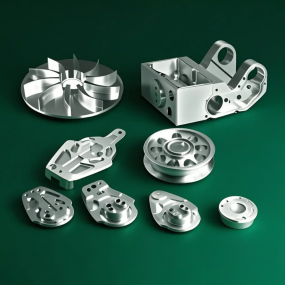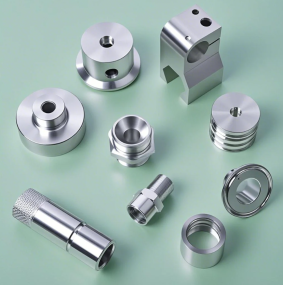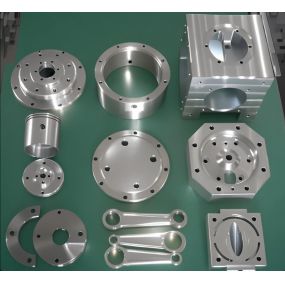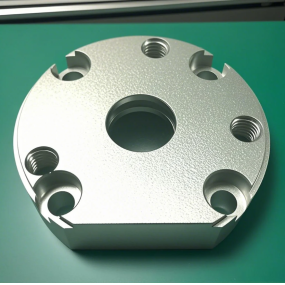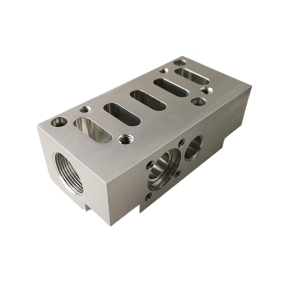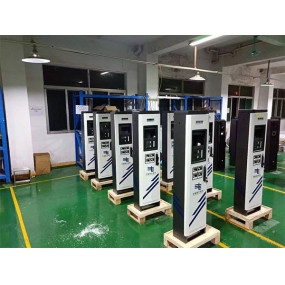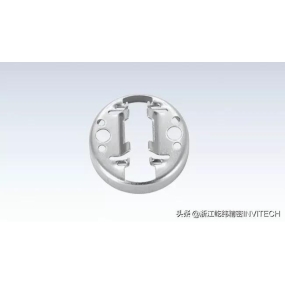Brass rod material is a common material in the field of precision machining and has a wide range of applications. Shenzhen EMAR Precision Technology specializes in high-precision machining of brass rod material, involving industries such as drones, automotive parts, optical parts, communication parts, etc. Brass rod processing manufacturers must be aware of the application fields of different grades of materials. Below, we have compiled a list of commonly used brass rod grades on the market and their corresponding application ranges. (Rank from small to large)
H59
H59 brass is composed of 59% copper and 41% zinc, with good mechanical properties and excellent ability to withstand hot pressure processing, while its corrosion resistance is average.
Widely used in welding rods, hot stamping, and hot section components.
H62
H62 brass is composed of 62% copper and 38% zinc, with high strength, good thermoplasticity, easy welding, good corrosion resistance, and is prone to zinc detachment and stress cracking under good conditions.
Applied to various types of pins, nuts, washers, waveguides and radiators, used in the sugar industry, shipbuilding industry, and paper industry.
H63
H63 brass is composed of 63% copper and 37% zinc, with sufficient mechanical properties, good hot pressure processing performance, and average corrosion resistance.
H63 brass is generally used in various shallow stamping parts, sugar and ship fittings, gaskets, etc., mainly in the form of rods.
H65
H65 brass is composed of 65% copper and 35% zinc, with sufficient mechanical and processing properties, good cold and hot pressure processing performance, and a golden color.
Widely used in various hardware products, lighting fixtures, pipe fittings, zippers, plaques, rivets, springs, settling filters, etc.
H68
H68 brass is composed of 68% copper and 32% zinc, with good plasticity and high strength, good machinability, easy welding, corrosion resistance, and good cold and hot processing performance.
H68 brass is widely used in various cold stamping parts, radiator shells, corrugated pipes, conduit pipes, doors, lighting fixtures, etc.
H70
H70 brass is composed of 70% copper and 30% zinc, with high plasticity and strength. It has good cold formability, is easy to weld, and has good corrosion resistance. It is highly sensitive to stress corrosion cracking in an ammonia atmosphere.
H70 brass is widely used in signage labels, reliefs, battery caps, musical instruments, flexible hoses, pump tubes, corrugated tubes, building supplies, and more.
H85
H85 brass is composed of 85% copper and 15% zinc alloy, which has good mechanical properties and corrosion resistance. It has excellent cold working performance and good hot formability.
H85 copper is widely used in industries such as building decoration, micro seals, corrugated pipes, serpentine pipes, water pipes, condenser and heat exchanger pipes, and cooling equipment components.
H90
H90 brass is composed of 90% copper and 10% zinc alloy, which has good mechanical properties and cold and hot pressure processing performance. It is basically the same as H96. H90 brass is also suitable for upsetting, rolling and hot forging, with good corrosion resistance, gold plating, enamel coating, etc.
H90 brass is generally used in decorations, medals, marine components, rivets, waveguides, radiator straps, battery caps, waterway pipes, and for the production of bimetallic materials.
H96
H96 brass is composed of 96% copper and 4% zinc alloy, with good cold and hot processing performance, suitable for processing methods such as extrusion, tying, stamping, pulling, forging, etc., easy to weld and tin plated; Has high corrosion resistance in both atmospheric and light environments, and is stress free from corrosion cracking and tilting.
H96 brass is generally used in currency; Keepsake; Micro chapter; Detonator; Shell casings, enamel substrates, waveguide tubes, heat dissipation tubes/sheets, conductive devices, etc.
The above are the common and frequently used brass bar material grades. If you have precision machining needs for brass parts, you can contact us. We have more than 100 types of precision CNC Machining equipment and have accumulated considerable experience in precision part machining in multiple fields, ensuring timely delivery cycles.


 Spanish
Spanish Arabic
Arabic French
French Portuguese
Portuguese Belarusian
Belarusian Japanese
Japanese Russian
Russian Malay
Malay Icelandic
Icelandic Bulgarian
Bulgarian Azerbaijani
Azerbaijani Estonian
Estonian Irish
Irish Polish
Polish Persian
Persian Boolean
Boolean Danish
Danish German
German Filipino
Filipino Finnish
Finnish Korean
Korean Dutch
Dutch Galician
Galician Catalan
Catalan Czech
Czech Croatian
Croatian Latin
Latin Latvian
Latvian Romanian
Romanian Maltese
Maltese Macedonian
Macedonian Norwegian
Norwegian Swedish
Swedish Serbian
Serbian Slovak
Slovak Slovenian
Slovenian Swahili
Swahili Thai
Thai Turkish
Turkish Welsh
Welsh Urdu
Urdu Ukrainian
Ukrainian Greek
Greek Hungarian
Hungarian Italian
Italian Yiddish
Yiddish Indonesian
Indonesian Vietnamese
Vietnamese Haitian Creole
Haitian Creole Spanish Basque
Spanish Basque

